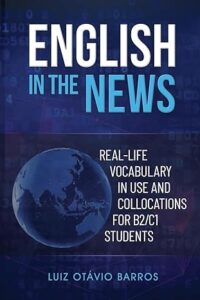As the pandemic goes on, it appears that we are going to be teaching online for quite a while longer. I’ve accepted this, and I’m doing what I can to adapt my teaching.
One thing that I’m working on is including more visuals in my classes. As anyone that has read my blog posts before knows, my teaching context is unique. Most of my classes are individual, and as a result I can personalize my classes for each student. Not all of these ideas will work with larger classes or in the context of university or institute teaching, but they can be adapted or used in one way or another. Below are some different ways I’ve been using flashcards in online classes.
Flashcards as a visual aid
Visual aids are an important component to language learning, and having an image to represent an idea or explain something is a way of lowering a student’s anxiety while improving comprehension.
I’ve created the cards below to help students remember the difference between who, what, when, where, why, and how.

Creating cards like this serves a few purposes. First of all, my students can see that I am a terrible artist and that I’m not perfect or good at everything I do. (In case you couldn’t tell, the picture I drew with the “What?” card is supposed to be a pizza with pepperoni and without pineapple.) In addition, the visual image and hopefully making them laugh or at least smile helps lower the affective filer.
If I’m teaching the question words to students, I could show the corresponding card when asking a question and then follow up with the written question in a Google Doc. We can then brainstorm possible answers to the question to help generate vocabulary and engage students.
Cards like this can be used even if you’re not teaching the question words to students. They can serve as a reminder or for clarification as needed, and students can make their own cards to use in class.
Flashcards in conjunction with Partial Physical Response
Total Physical Response (TPR) is a way of engaging students in classes by using their whole bodies to express themselves. Typically students get out of their seats to participate in TPR, but that isn’t always practical with online classes. What I have done for online classes is have students engaged with their upper body that is visible on camera, hence the name Partial Physical Response.
In a class about how to use in, at, and on as prepositions of location, I show students cards with a phrase. Students decide which preposition they think is used with the phrase and give a response by doing one of four things:
- For the preposition in, they put their hands on their head.
- For the preposition at, they put their hands on their ears.
- For the preposition on, they put their hands on their shoulders.
- If they don’t know and don’t want to guess, they can hold their hands in the air.
After each student has given a response, I then tell them the correct response. (At the same time, I’m making a mental note of who is getting correct and incorrect answers.) We go through the cards together as a class.
Here are some of the cards I typically use:
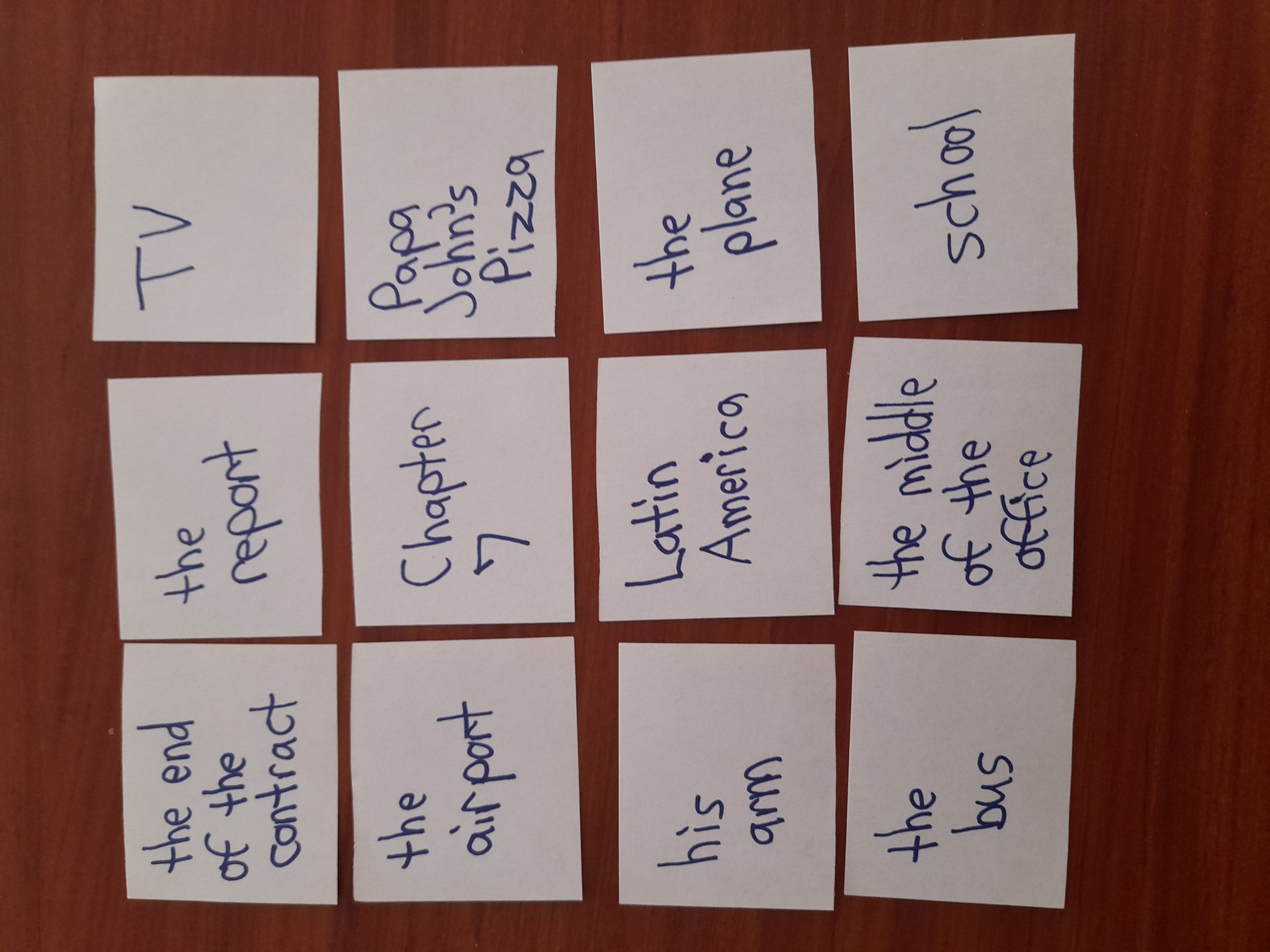
After going through all the cards, we then review them as a class and sort them into the correct category in a Google Doc. We also discuss the patterns that they see, and I guide them towards the rules as needed.
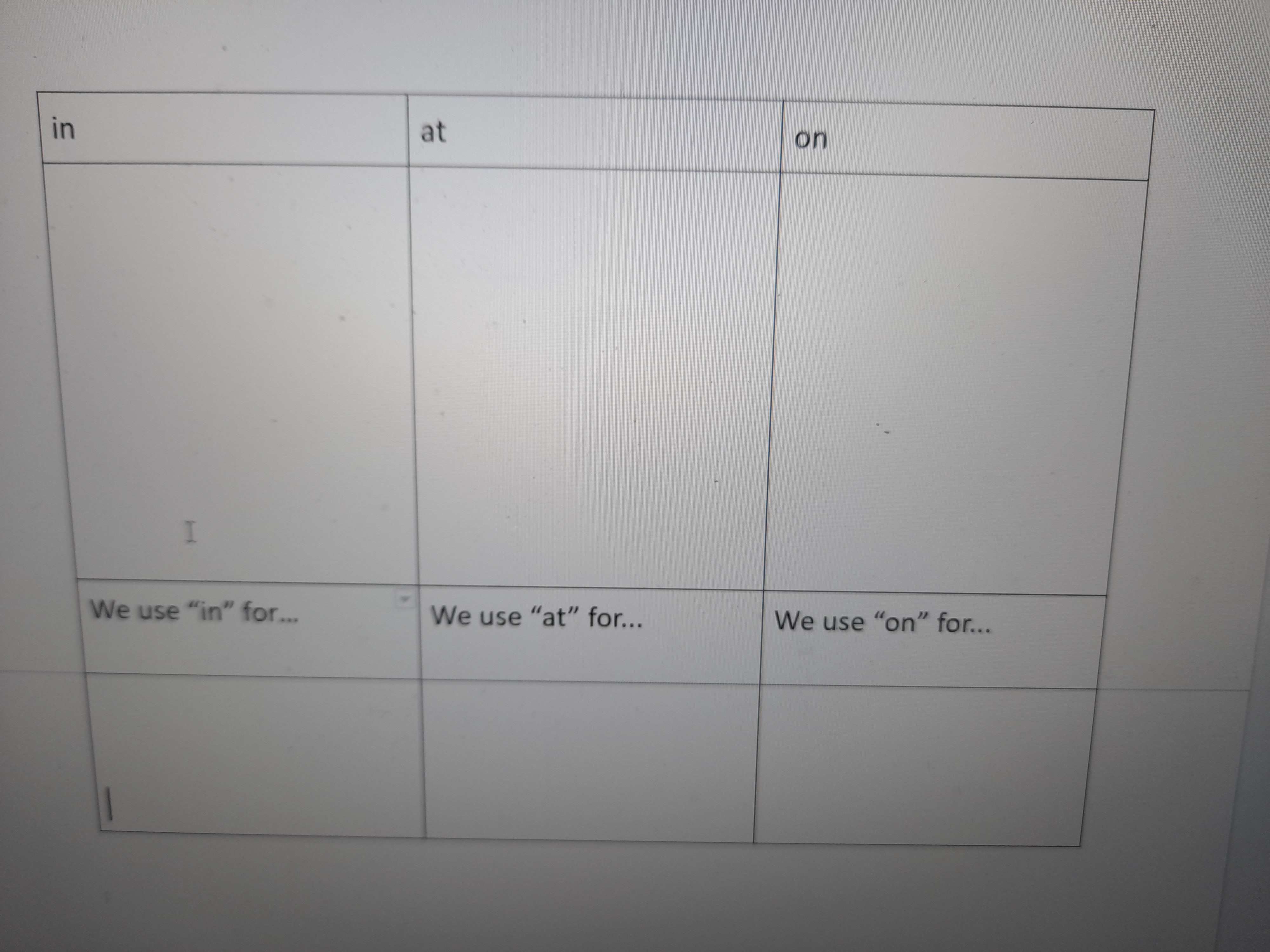
We then take a look at some more cards that have more than one possibility. Some examples are as follows:
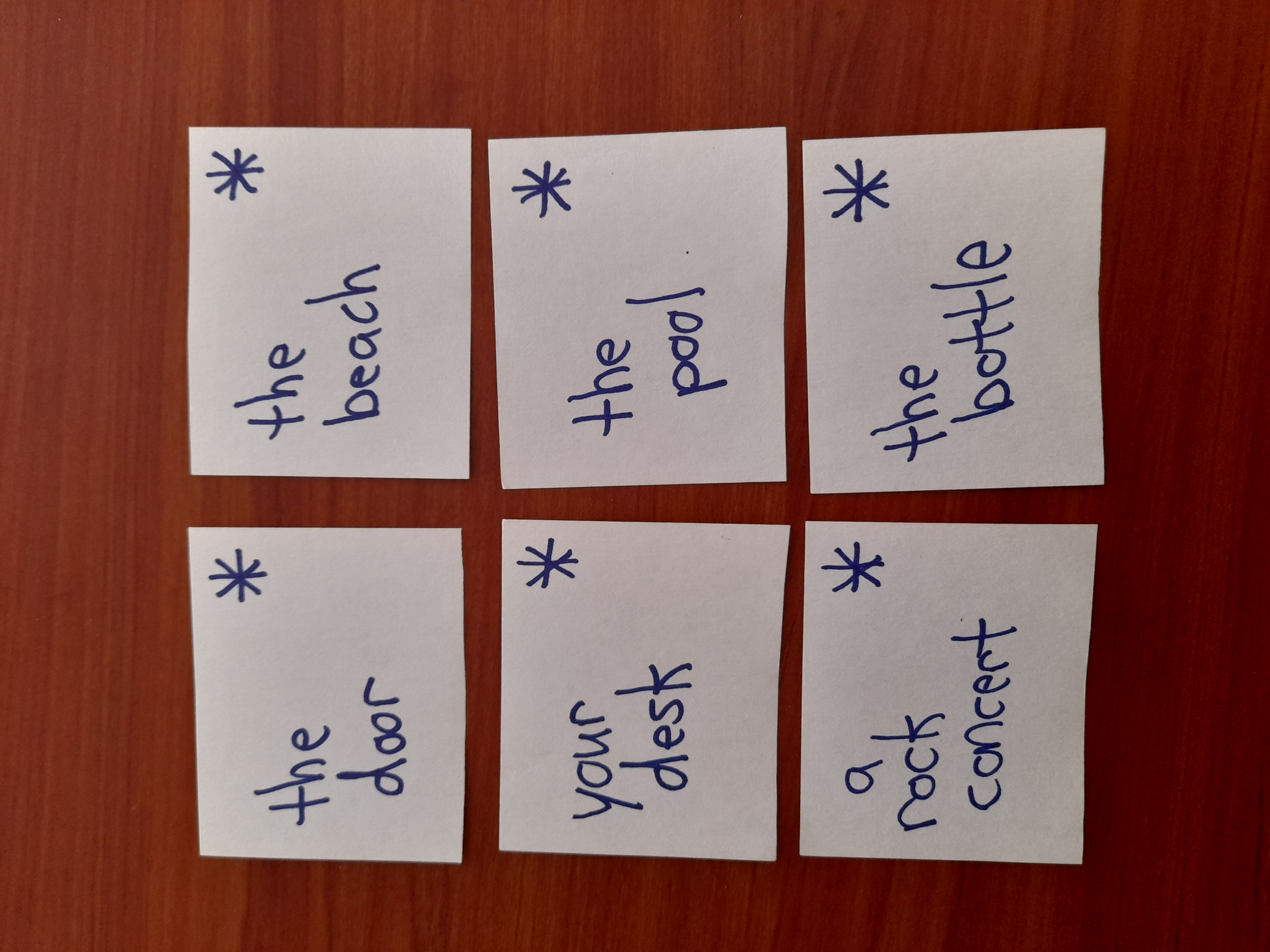
We then continue the conversation about why these cards have more than one possibility and how the preposition used changes the meaning.
I’ve found that combining PPP with having students figure out the rules followed up with written practice allows for effective mastery of these prepositions. This can also be adapted to other grammar points or vocabulary such as do versus make, the pronunciation of -ed in the past simple, and more.
Cards to use with songs
I have some young students that like singing in class, and doing a search for lessons for Christmas I came across a set of cards for The Twelve Days of Christmas.
Here are some of the cards I found:
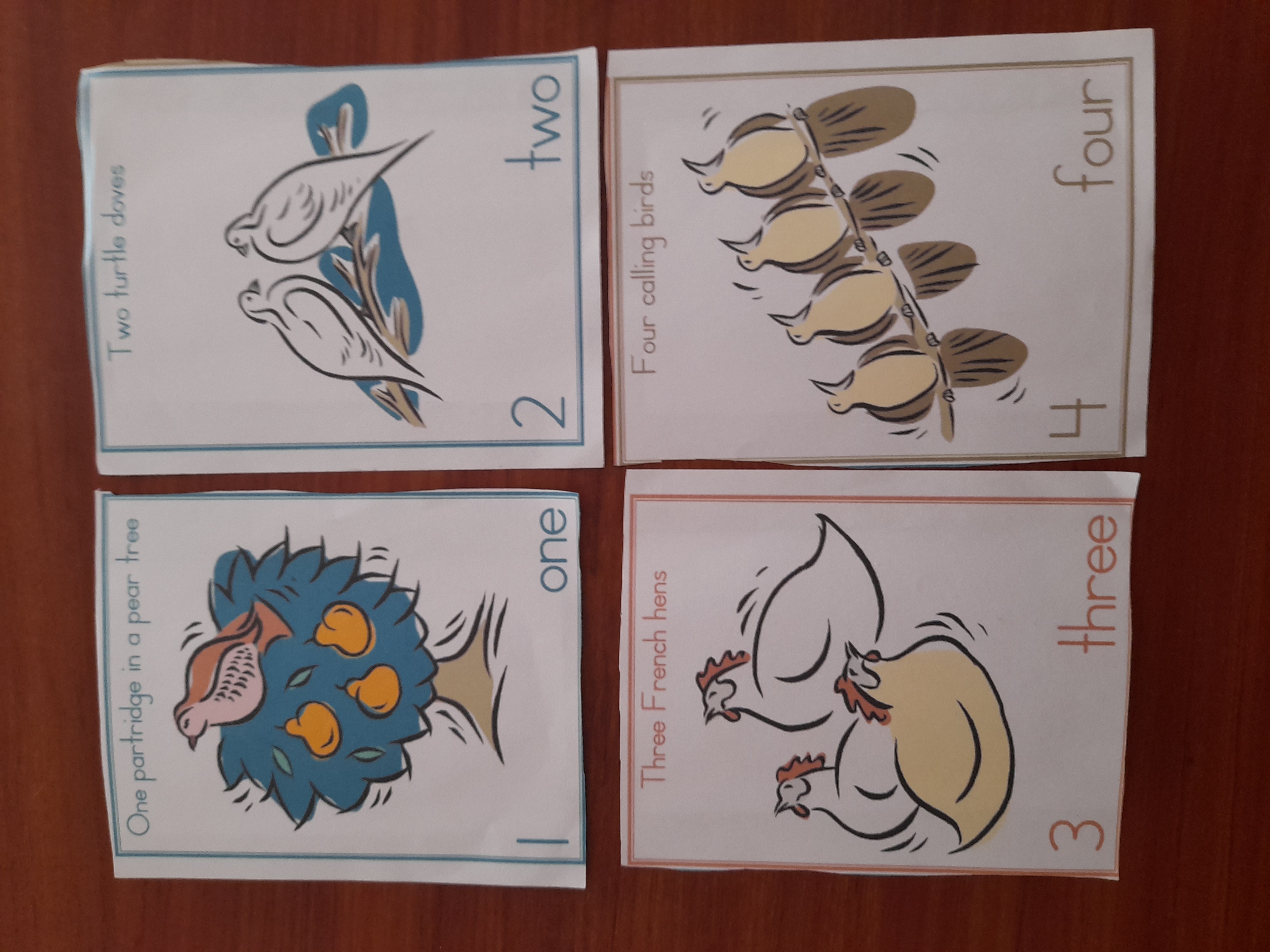
Each card is nicely illustrated and includes the number word written out and as a Roman numeral, and the song also works well with ordinal numbers.
I emailed the cards to my students in advance, so for this activity they need to be able to print. In class we looked at each of the cards and talked about what we saw, and I sang the song bit by bit while students held up the correct card. After that I played the song, and we both tried to hold up our cards in time with the song. It doesn’t seem like it would be that difficult, but as the song goes on it gets more and more challenging! I found my students laughing trying to keep up near the end of the song.
Obviously not every classroom will be able to use this exact song, but students can create cards to represent different parts of a song and hold them up at the appropriate times. This also works nicely for students that don’t like singing, and it still allows them to engage in the lesson in another way.
Conclusion
There’s a lot we can do with flashcards to engage our students in online classes. These are just three ideas, but I’m sure there are many more that teachers are using.
Are you using flashcards like these in your online classes? If so, leave a comment below.


